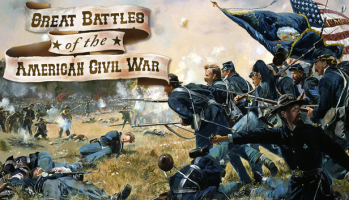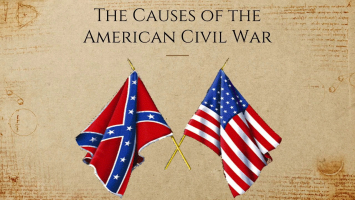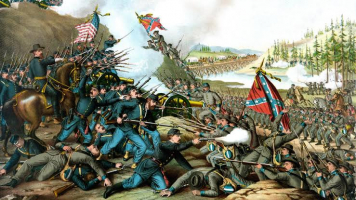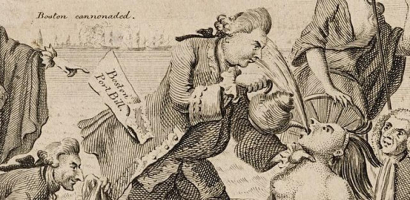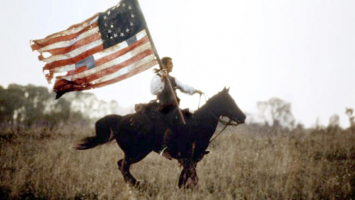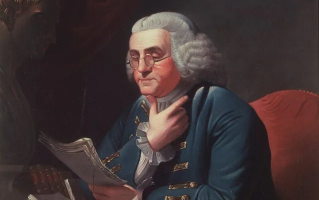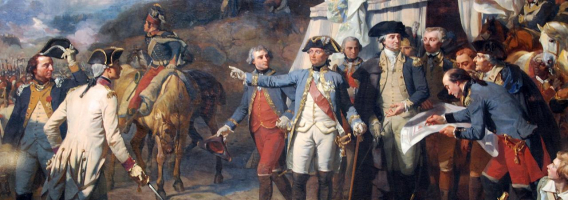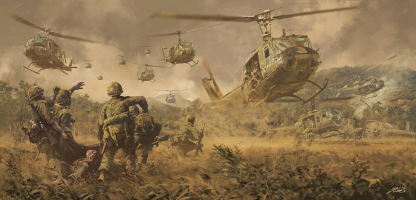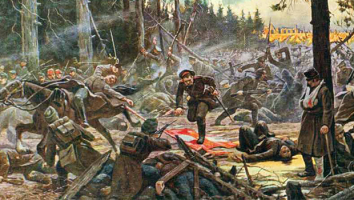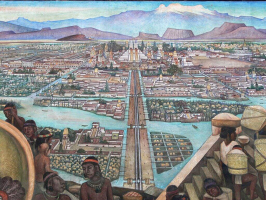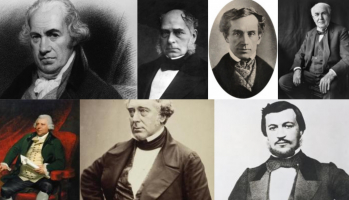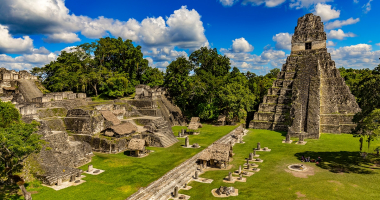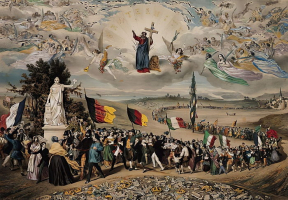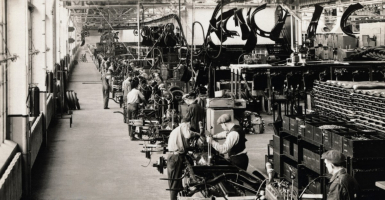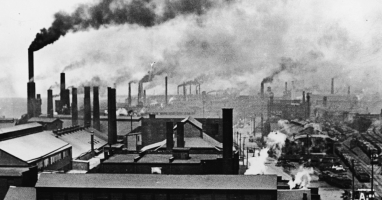Top 10 Major Battles of the American Revolutionary War
The American revolutionary war, also known as the American War of Independence occurred between 1775 and 1783. After two centuries of colonial rule by the ... read more...British, the war ended, leading to a free nation that had achieved independence from the thirteen major colonies. Below are Here are the major battles of the American revolutionary war.
-
The Battle of Monmouth, which was fought on June 28th, 1778 in Monmouth, New Jersey is one of the major battles of the American revolutionary war. In order to delay the arrival of the remainder of the army from Valley Forge, General George Washington had instructed Charles Lee, who was second in command, to advance with a small contingent of the Continental Army and confront the British forces. Charles Lee gave the order to withdraw the troops from the field of battle after several hours of fighting the British. To Lee's great astonishment, Washington ran into him on the highway close to Monmouth Courthouse, New Jersey. Washington and Lee got into a heated argument as a result.
Washington ultimately made the decision to march his forces as Lee hesitantly agreed to command the advance party. He resumed the assault on the British after gathering his remaining forces. The delay caused by the commanding general enabled the remainder of the Continental Army time to advance and join the fight. Many people were killed and injured throughout the conflict as Americans attacked the British army while it was fleeing. Washington was praised for his bravery and courage throughout the Battle of Monmouth, which the Americans ultimately won.
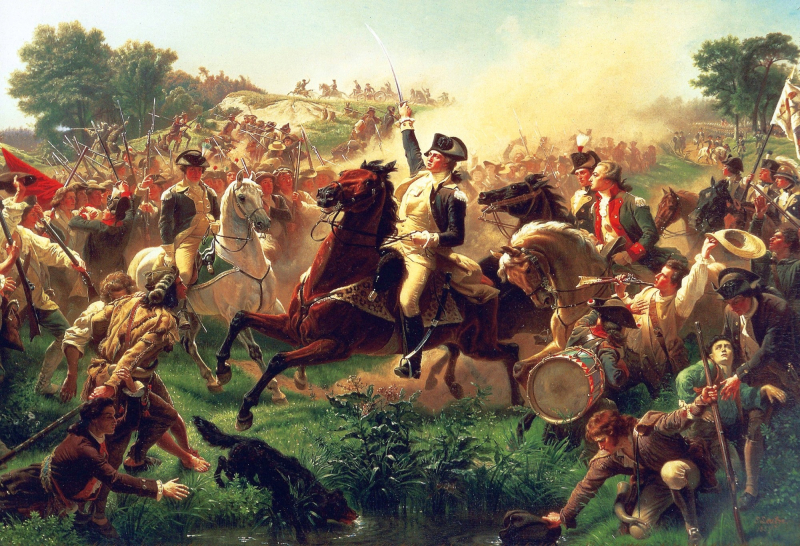
Photo: Wikipedia 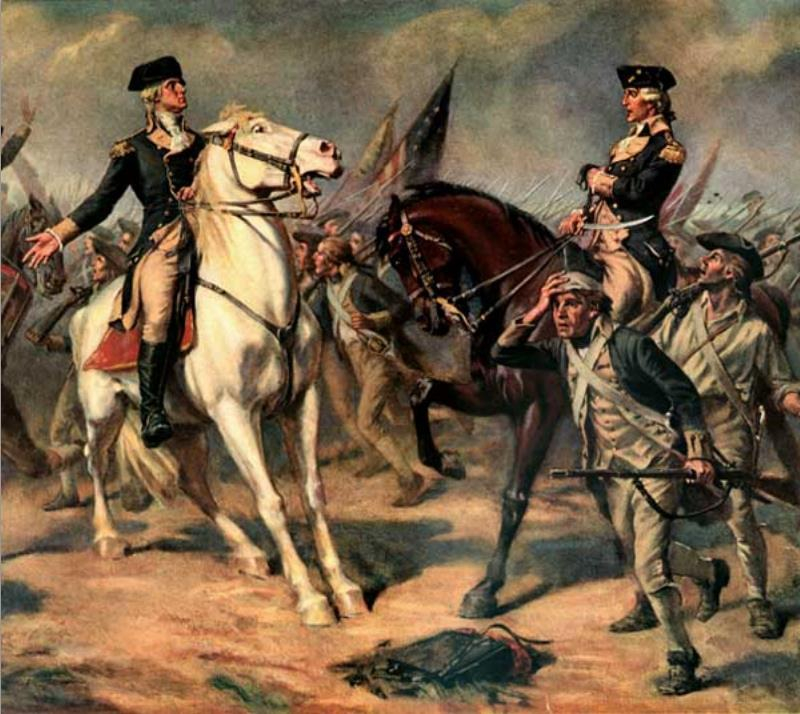
Photo: Revolutionary war and beyond -
During the Revolutionary War's Southern Campaign, a Patriot militia and a Loyalist army engaged in combat in the Battle of King's Mountain in South Carolina. One of the bloodiest battles of the conflict, it was a decisive triumph for the Patriot militia. Following the attack by the Patriot militia headed by Colonel William Campbell, the Loyalists under Major Patrick Ferguson refused to give up. As a result, the Loyalist army thought of making a suicidal charge down the mountain, but they were wiped out in a storm of gunfire. While the Patriots only suffered 28 fatalities and 60 injuries, the Loyalists suffered 157 fatalities, 163 injuries, and 698 captures.
At Kings Mountain, the Patriot riflemen killed more enemies because their rifles were more accurate than those of their rivals. The opposing armies at Kings Mountain had several tactics in addition to deploying various weaponry. On Kings Mountain, every militiaman had received orders to lead himself and to seize any opportunity. From behind rocks and trees, the Patriots engaged in frontier-style combat. The Loyalists engaged in volley fire and bayonet attacks while fighting in close-order ranks.
The Battle of Kings Mountain was one of the few major battles of the American revolutionary war fought exclusively amongst countrymen. No British troops were stationed there, the only other British person on the field was Major Patrick Ferguson, head of the Loyalist troops.
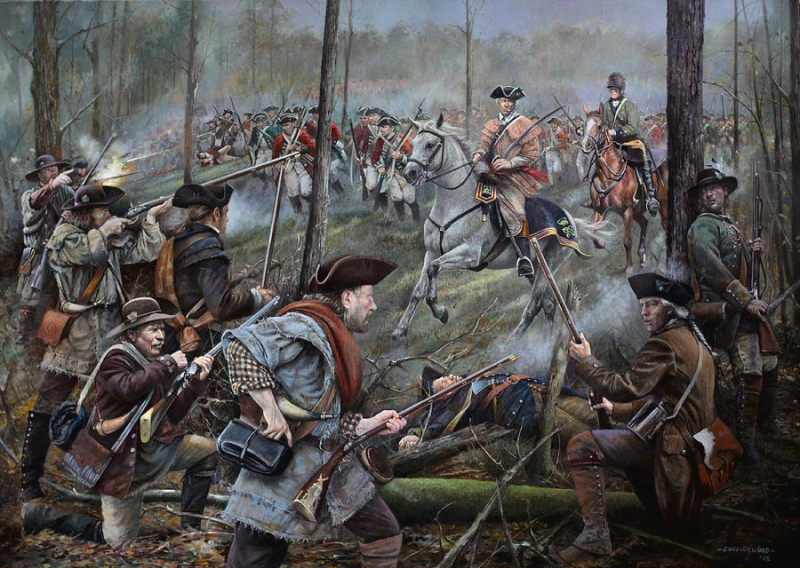
Photo: Pixels Source: Philip Dean -
During the previous French and Indian Wars, Fort Ticonderoga served as a crucial gateway to both Canada and the Hudson River region. The Fort was in the Northeastern New York's Lake Champlain. On May 10, 1775, Benedict Arnold, Ethan Allen, and the Vermont-based Green Mountain Boys banded together to attack the fort early in the morning. The British, who were sleeping at the moment, were too shocked to counter the attack. Despite being a minor war, the battle of Fort Ticonderoga was significant as the American forces' first win in the revolution. Additionally, the continental army received much-needed artillery for use in upcoming engagements.
Nobody is killed in the battle of Fort Ticonderoga. The massive cache of cannons that Henry Knox transfers to Boston later that year was the true victory for the battle rather than the fort itself. Fort Ticonderoga remains securely in American control until the Saratoga Campaign of 1777, when the British Army, led by General John Burgoyne, moves south from Canada toward Albany, New York. Burgoyne's engineers take advantage of Mount Defiance's uninhabited high ground and raise their cannons there, aiming them towards Fort Ticonderoga. On July 5, 1777, the American garrison leaves the fort without a fight after realizing their predicament. The fort no longer has a significant impact on the conflict as British military operations shift south following Burgoyne's defeat at Saratoga in October 1777.
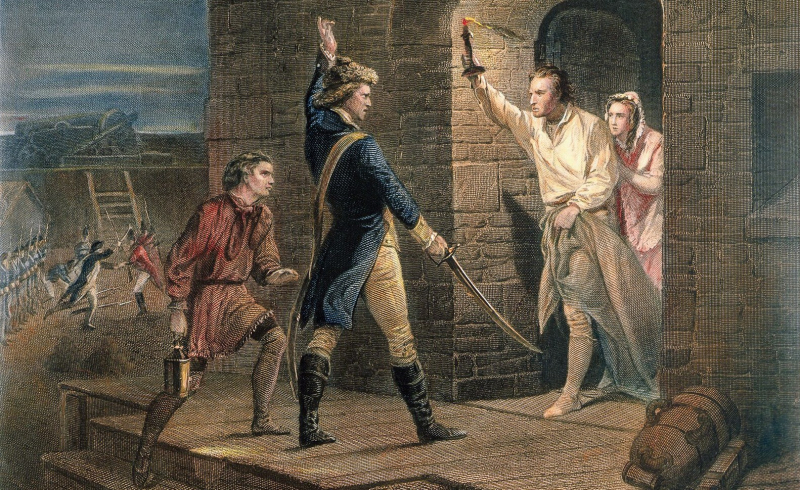
Photo: Dartmouth Alumni Magazine 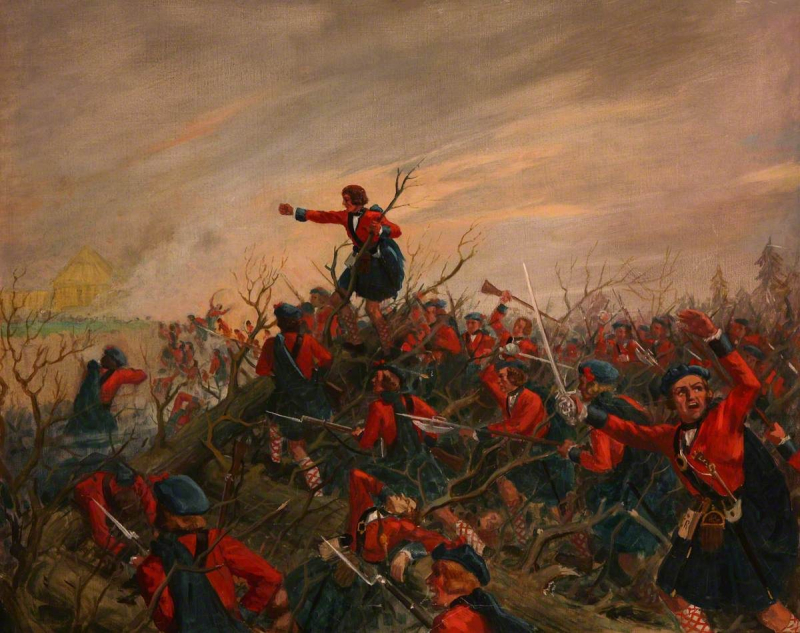
Photo: Art UK -
One of the major battles in the American revolutionary war is the battle of Cowpens, taking place in South Carolina on January 17, 1781, during which American troops caused heavy loss to the British. Brigadier General Daniel Morgan was in charge of the American forces, while Lieutenant Colonel Banastre Tarleton was responsible for the British forces. After firing two rounds, General Morgan ordered the militia to withdraw from the front line. When the British misunderstood it for a rout and fled into a concentrated rifle fire and the militia's return, this repositioning plan was successful.
Following the battle, over 800 British soldiers died as a result of the American troops' devastation of the British army, while only roughly 100 Americans died. Tarleton managed to flee as a result. Morgan buries the dead before leaving with a large number of British prisoners to avoid coming across Cornwallis. Later, due to poor health, he leaves the military. After the battle of Cowpens, Cornwallis gives up trying to defeat Greene's force in South Carolina and pursues them into North Carolina. In March, he overthrows Greene at the Battle of Guilford Court House before retreating to Virginia to recover and resupply his worn-out and depleted force. At the Battle of Yorktown, the Revolutionary War's final significant battle, Washington seizes the chance to trap and overpower Cornwallis.
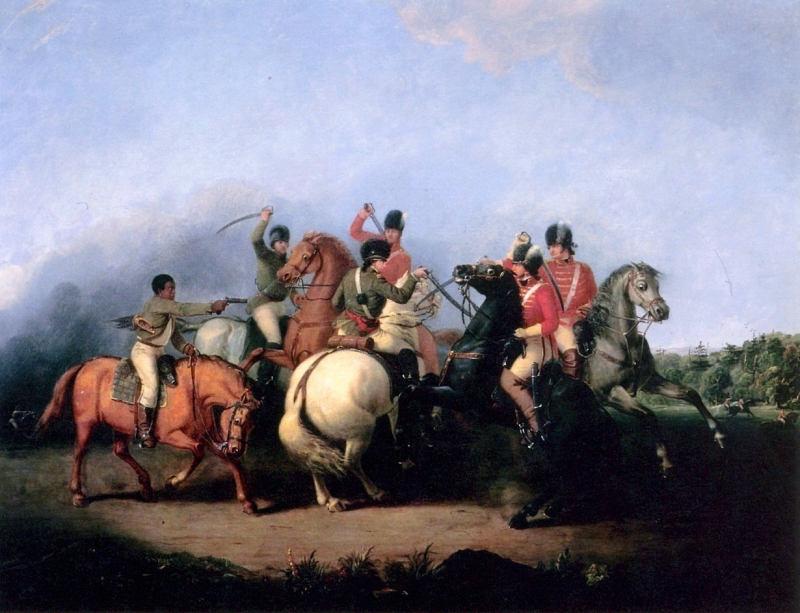
Photo: Wikipedia Source: Have history will travel -
The Battle of Saratoga took place in 1777 on September 19 and October 7 and lasted eighteen days. In favor of Americans, it is recognized as the pivotal fight in the American Revolution. On September 19, the British defeated the American army in the First Battle of Saratoga. The British forces led by General John Burgoyne won a meager battle, but it cost them dearly. The British attacked the Americans at Bemis Heights once more on October 7th, but this time they were defeated and had to retreat.
Following the humiliation of the British at the battle of Saratoga, Horatio Gates gains significant public support and launches a brief covert campaign to replace George Washington as the head of the Continental Army. Washington keeps his position despite the plot's failure. After leading his beaten army back north, General Burgoyne marches to England. He receives harsh criticism for his performance at Saratoga and is not given any more commands by the British Army.
France formally forms a Treaty of Alliance with the Americans after being impressed by the Patriots' resistance to Britain, tipping the war in their favor. Later, in an effort to undermine British dominance in Europe, the Spanish and Dutch also help the Americans.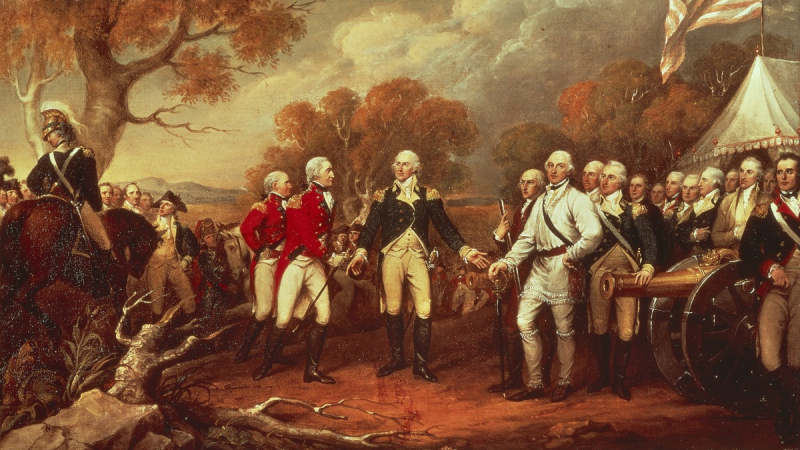
Photo: History 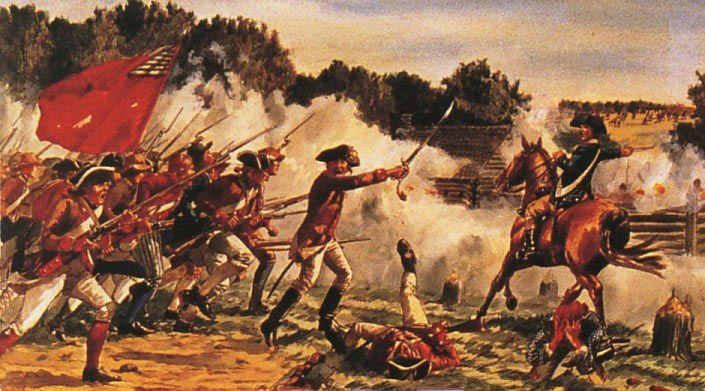
Photo: History on the Net -
The Battle of Bunker Hill took place in Massachusetts on June 17, 1775, and saw the British forces defeat the American Continental Army. Despite their success, which boosted their morale, the inexperienced colonial force suffered heavy losses in this battle. With over half of the 2,200 Redcoats who participated in the combat killed or injured, it was one of the bloodiest in the American Revolution. In comparison to the casualties suffered by the British, the patriots only suffered 400 casualties.
The British triumph, but at a price. British Maj. John Pitcairn, the officer hated for supposedly ordering his men to fire on Americans during the fight of Lexington and Concord weeks earlier, is said to have been killed at some point in the conflict by a "black soldier named Salem." However, the actual combat took place a neighboring third of a mile south on Breed's Hill rather than on Bunker Hill.
After the battle of Bunker Hill, the Patriots lost, but they are not discouraged. The core of the Continental Army is made up of those who decide to remain and keep the British cooped up in Boston. Within two weeks following the erroneously dubbed Battle of Bunker Hill, Virginian George Washington, who takes charge in Cambridge, Massachusetts, is tasked with turning the mob into a fighting army.
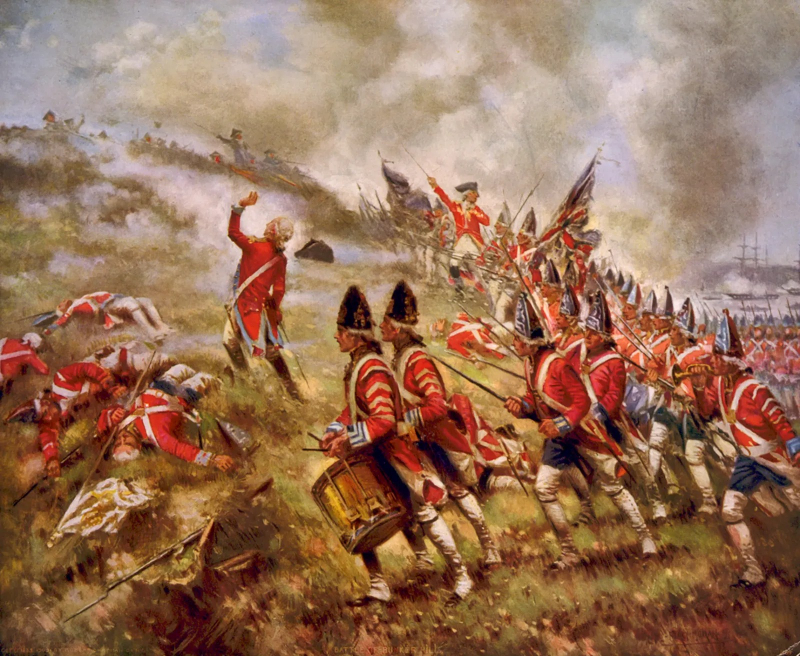
Photo: britannica Photo: Simple History -
The American Revolutionary War, known as the Battle of Fort Washington ended in a British victory and the subsequent defeats of the fort's garrison. One of the heaviest losses for the Patriots resulted from the conflict. British and German soldiers joined arms against the American Continental Army on November 16, 1776, in New York. General William Howe defeated the Continental Army under General George Washington, costing the American army artillery, supplies, and maybe up to 3000 deaths. While the British seized Fort Washington, the Americans were forced to flee to the Delaware River.
The Patriots left Fort Lee three days after the battle of Fort Washington. While being chased by British forces as far as New Brunswick, New Jersey, Washington, and the army fled through New Jersey before crossing the Delaware River into Pennsylvania northwest of Trenton. On the night of December 25–26, 1776, Washington crossed Delaware after nearly a month and overcame Rall's Hessian force at Trenton. Washington then went on to defeat the British at Princeton, which boosted the American army's morale and that of the provinces damaged by Fort Washington's fall.
After seven years, on November 25, 1783, after the peace treaty was completed and the last British forces had left New York, General Washington and Governor George Clinton marched triumphantly into lower Manhattan to retake Fort Washington.
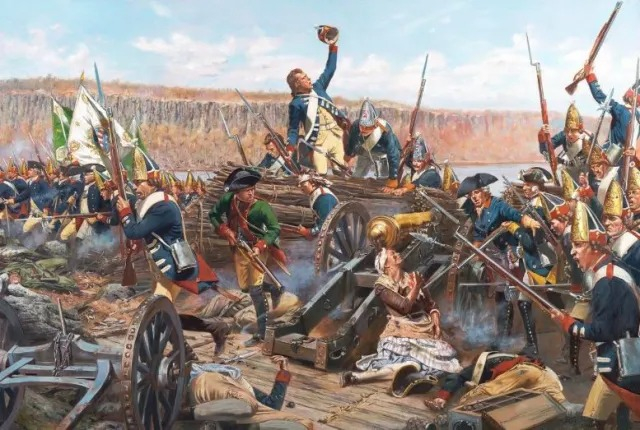
Photo: Revolutionary War Journal 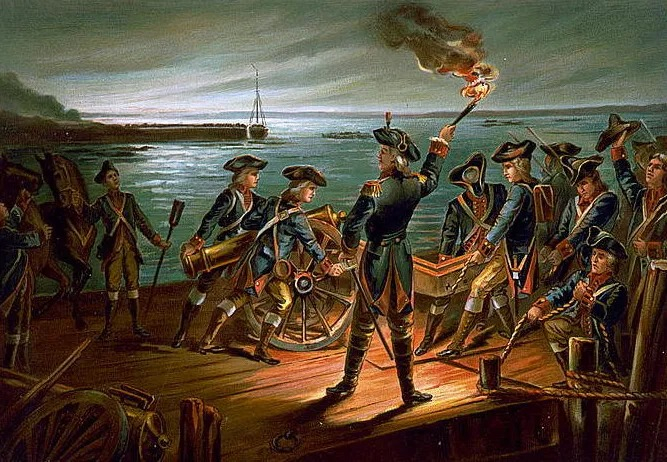
Photo: Military History Now -
Battles of Trenton And Princeton were marked by the event of General George Washington crossing the icy Delaware River on the night of Christmas and into the morning of December 26th in 1776. Having about 1,400 troops with him, General George Washington led his Continental Army against the British forces stationed at Trenton. General Washington captured more than 900 men and four days later captured Trenton. The Americans are late because of the storm, and they reach Trenton's outskirts just before dawn. The army under Washington is divided into two columns. Major General John Sullivan leads one attack from the west to sever the line of retreat to the south, while Major General Nathanael Greene leads one from the north.
The victory at Trenton gives Washington the confidence to cross Delaware again a week later in an effort to draw British soldiers away from Trenton. By doing this, the Americans take the upper hand and win the Battle of Princeton. Washington demonstrates in these battles his ability to assemble colonial militias into a unified national force. The Continental Army then marches to Morristown to make their winter quarters.
These two victories at the Battles Of Trenton And Princeton played a crucial role in strengthening American troops' morale and securing their quest for freedom. Washington won the loyalty of his soldiers in these fights, showed his brilliance and tenacity as a commander, and reinvigorated the Continental Army.
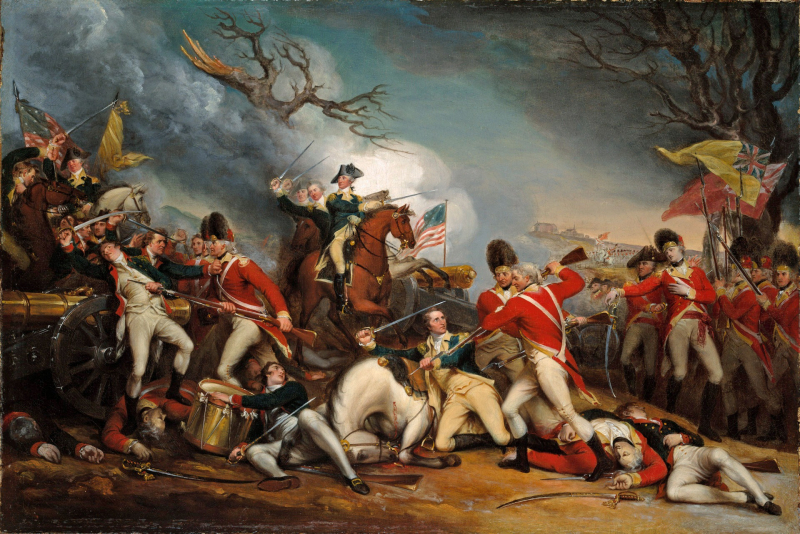
Photo: NJ Spotlight News Photo: History -
From September 28 through October 19, 1781, the Americans and their allies in France fought the British in Virginia in the Battle of Yorktown. It's also one of the American Revolutionary War's final major battles. An army of 17,000 French and American soldiers led by General George Washington faced a battalion of 9000 British soldiers led by General Lord Charles Cornwallis. While the French naval force blocked the British from escaping via the water, the American army combated the British by obstructing their departure by land. The War for Independence came to a conclusion when the British finally submitted in the field at Yorktown after three weeks of day and night shelling. On October 19, there was a ceremonial surrender ceremony in which the French and American leaders received the sword.
The British war effort came to an end with the Battle of Yorktown. A bill allowing for peace with America is approved by British Parliament on March 5, 1782. After 15 days, Lord North announces his resignation. The war is won when the British are defeated at Yorktown, despite the fact that it takes the Americans two more years of deft diplomacy to formally gain their independence through the Treaty of Paris.
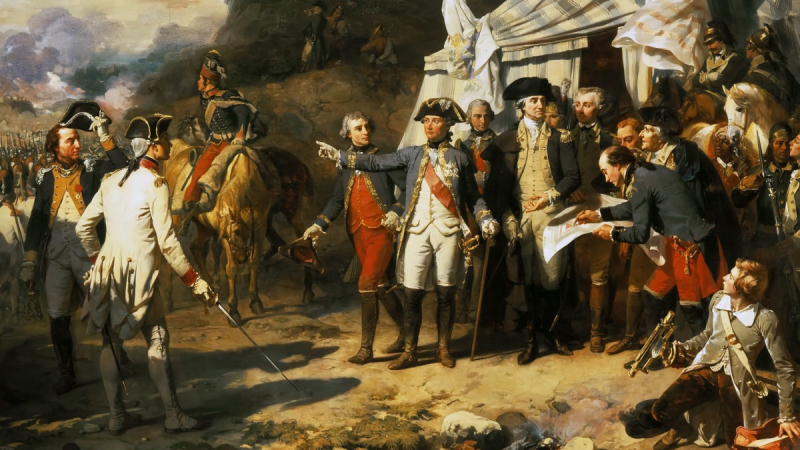
Photo: History 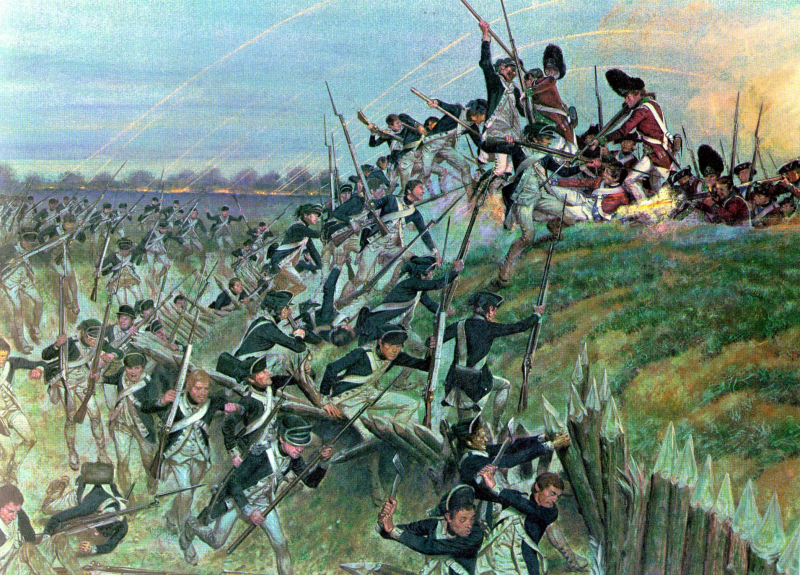
Photo: Wikipedia -
The Revolutionary War's opening engagements, the Battles of Lexington and Concord, started on the night of April 19, 1775. British colonists and enraged local militia engaged in combat. Tension escalating between the inhabitants of the 13 American colonies and the British colonists sped up the period leading up to the war. 700 British soldiers marched from Boston to Concord on the first night of the American Revolution in order to raid an arsenal. The American militia was informed of the impending British onslaught by Paul Revere. The British started to mobilize to fight the Redcoat column and the Patriot movement as soon as they understood their plot had been exposed.
The British engaged in a running battle until they can take cover behind British guns on ships anchored in the canals surrounding Boston. The Patriots pursue them but ultimately let them go because they lacked clear orders. Following the battles of Lexington and Concord, Governor Gage realized Boston faced a sizable militia of men who have come from all over New England to fight for liberty. This tenacious troop, numbering 20,000, will join the Continental Army.
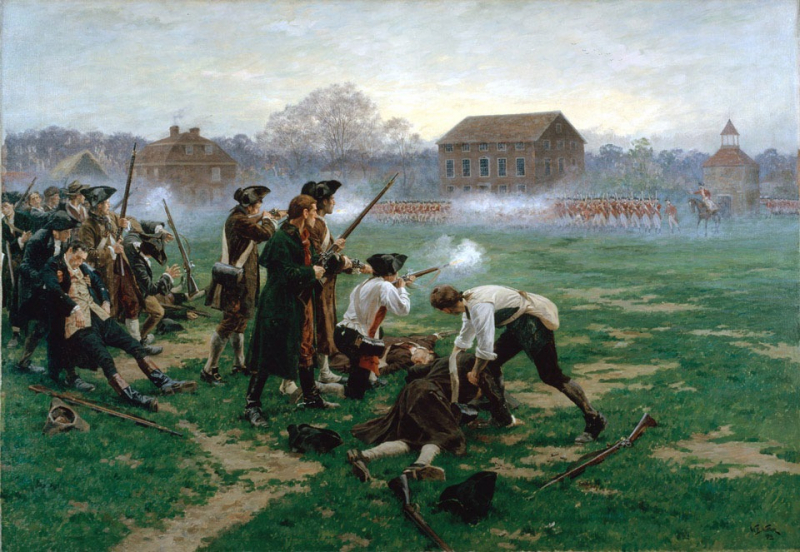
Photo: Wikipedia Source: Simple History












